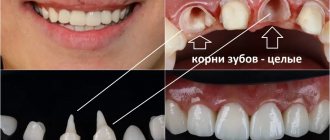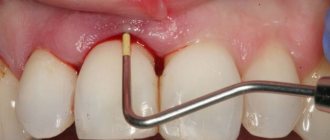How many obstacles must a sperm overcome before meeting an egg, and even more in order for fertilization to occur! The egg matures in the ovary only under certain conditions, and it is surprising that only one sperm in a million fertilizes the egg.
Fertilization of the egg can only occur if the fallopian tubes are well patted. After fertilization, the egg still needs time to migrate from the tube to the uterus, but pregnancy can only be confirmed after implantation of the embryo into the uterus.
How to recognize that it was after implantation in the uterus that pregnancy occurred?
How does a woman feel after implantation of an embryo into the uterus?
Symptoms are non-specific, and one woman may not always feel the same as others after this procedure.
Bleeding
This symptom involves the release of a small amount of blood, which occurs when the embryo is implanted into the endometrium of the uterus. They can be red or sometimes dark brown. Discharge during implantation is the result of damage to the capillaries of the uterine wall.
This symptom should be given special attention. And the reason is that already from the first week of pregnancy there is a risk of miscarriage. Moreover, against the general background of pain during embryo implantation in the lower abdomen, this process may be accompanied by bloody discharge. In addition, it is worth remembering that spotting is not only a sign of embryo implantation, but can be a consequence of infectious diseases of the genital organs or the presence of gynecological diseases.
Pain
Expectant mothers sometimes feel pain in the lower abdomen; during attachment, this phenomenon is common and is not considered a deviation from the norm. But, if the pain is pronounced, then you should seek advice and examination from a specialist.
Temperature increase
Temperature during attachment, as a rule, increases not only the total, but also the basal one. It can remain at an elevated level not only at the time of implementation, but also throughout the first trimester. This is one of the most common reactions to pregnancy in a woman.
Don't confuse pregnancy with a cold. After all, with successful implantation, chills and an increase in temperature to 37.3 may be observed for several days. If you are expecting pregnancy and your temperature begins to rise, you should not take antipyretic and antiviral medications - this can harm the embryo and terminate the pregnancy.
Implantation retraction
The period of implantation retraction is a slight decrease in basal temperature before its sharp increase. This sign makes it possible for a woman to accurately determine whether she is pregnant, but only if the measurement technique is performed correctly. Due to the fact that the temperature initially decreases during attachment, the symptom is called “retraction”.
Nausea
After implantation, many women experience not only changes in their taste preferences, but also nausea and an unpleasant taste in the mouth, which are often confused with possible food poisoning.
Weakness and malaise
With the onset of pregnancy, after successful attachment, many women may feel a sharp loss of strength, apathy, and dizziness.
Psycho-emotional instability
In the initial stages of pregnancy, the mood can change dramatically; expectant mothers suddenly begin to feel a lack of love, attention, self-pity and despondency.
What will help reduce pain during the rehabilitation period?
To alleviate the negative feelings of the post-implantation period, you need to follow the recommendations of your doctor :
- do not give the implant chewing load, consume only liquid and soft foods;
- food should be at room temperature, too hot will increase pain and swelling;
- carefully monitor oral hygiene;
- do not touch the wound with your tongue or foreign objects;
- avoid physical activity;
- do not visit the sauna, bathhouse, swimming pool;
- stop drinking alcohol and smoking;
- Take medications prescribed by your doctor in a timely manner.
Painkillers are taken 1-2 tablets no more than 4 times a day. The following medications will help relieve pain in the maxillofacial region:
- Ketanov (Ketarol, Ketanal);
- Nurofen (Ibuprofen);
- Paracetamol (Efferalgan, Panadol);
- Nimesil (Nise, Nimesulid, Nimid);
- Dexalgin 25;
- Trigan-D;
- Solpadeine.
Each drug has side effects, so before taking it, you should consult your doctor to avoid harm.
On what day does embryo implantation occur?
The development of a normal pregnancy is possible only after proper implantation.
In order to find out on what day implantation occurred, you should find out the date of ovulation, since the calculation is made from this time. It is believed that the time for implantation of the embryo into the uterine mucosa is the 9th day after ovulation and expected fertilization. In almost half of the cases such calculations are correct.
Of these 9 days after fertilization and before implantation, 6 days the egg moves through the fallopian tubes, where it simultaneously divides. During this period of time, the egg goes through three stages of development - zygote, morula and blastocyst, and the rest of the time the embryo “floats” in the uterine cavity, until the preparation processes for implantation are completed. That is, the average time is 9 days, but implantation can occur either after this period or earlier.
Types of implantation
The following types are distinguished:
- early;
- late.
If the day of embryo implantation occurs less than a week after ovulation, it is considered early. As a rule, at this stage the uterus is not yet properly prepared for such an attachment, but pregnancy still occurs. Late embryo implantation means that at least 10 days have passed since fertilization. As a rule, this type of implantation is most suitable for in vitro fertilization (IVF). Sometimes late implantation is observed in women who no longer plan to give birth due to age.
Embryo implantation during IVF
If a married couple is unable to give birth and conceive a child naturally, then the IVF Center clinic in Kaliningrad offers an in vitro fertilization procedure.
Before implanting a fertilized egg into a woman’s uterus, it is necessary to carry out a series of examinations and diagnostic procedures to assess the condition of the uterus, its size (length, wall thickness and, accordingly, the endometrium). If a woman has hypertonicity of the uterine muscles, relaxing medications are prescribed before IVF.
Before implantation, it is necessary to evaluate the nutritional resources of the uterine walls, which are so necessary for pregnancy and normal development of the embryo; a lack of nutrients can threaten termination of pregnancy.
For pregnancy to develop, a sufficient amount of progesterone in the female body is necessary, the level of which is carefully measured both before and after implantation.
Only the healthy and most active embryos are selected for replantation; they are also carefully examined before implantation into the uterus. At this stage of development, it is possible to diagnose changes in the genetic apparatus of a fertilized egg.
Even with successful and correct IVF, attachment may not occur. There are many reasons for this phenomenon. The embryo may have an undiagnosed genetic disorder, which prevents the normal development of the fertilized egg.
Pathology on the part of the uterus can also prevent the implantation of the embryo into its mucosa.
Key points for successful implantation:
- adequate endometrial thickness;
- progesterone level;
- absence of autoimmune diseases.
Assisted hatching
This is a procedure that increases the possibility of pregnancy through successful implantation.
The essence of hatching is to apply micro-incisions on the outer membrane of the embryo, which simplifies the implantation process. The procedure is carried out in artificial insemination clinics:
- with previous unsuccessful IVF attempts,
- in patients over 35-40 years old,
- when using cryopreserved embryos.
You can make an appointment with a specialist at the Andrologist MC by phone +7
.
Previous article
Next article
Thickness of the endometrium of the uterus
Insufficient thickness of the endometrium of the uterus is a fairly serious and significant reason for the failure of in vitro fertilization.
Thin, immature endometrium is not able to provide the embryo after implantation with sufficient nutrients necessary for its development. In addition, it does not perform a sufficient secretory function. This factor also affects the further course of pregnancy.
Factors that influence embryo maturation:
- uterine hypoplasia and associated hormonal imbalances;
- previous injuries, inflammatory processes that impair blood circulation in the uterus;
- traumatization of the endometrium, which arose due to frequent curettage and abortions.
A preliminary assessment of the condition of the uterus and the degree of its maturity is possible only after an ultrasound examination, during which the thickness of the walls of the uterus, their condition, the presence of defects and developmental disorders are determined.
Preparation
Dental implantation is a surgical procedure, so a thorough and careful examination is required before it is performed. The diagnostic stage can take up to several weeks and includes the following mandatory procedures:
- visual examination by a dentist, assessment of the condition of the oral cavity;
- radiography - a targeted image of an area that provides information about the condition of the bone and root systems of teeth located nearby;
- CT or computed tomography is a three-dimensional image that allows you to determine bone density;
- orthopantomogram - a panoramic image, the results of which can be used to judge the volume and structure of the jaw bones, the relative position of the teeth;
- consultation with a general practitioner, ECG and laboratory tests: general blood test, coagulogram (assessment of blood clotting);
- consultations with specialized specialists if necessary: allergist, ENT specialist (important when restoring teeth in the upper jaw), endocrinologist, cardiologist, neurologist, etc.
Separately, it is worth noting the sanitation of the oral cavity. One of the stages of installing a dental implant is the elimination of existing diseases: it is unacceptable to begin intervention if there are inflammatory diseases of periodontal tissue, caries, damaged teeth or roots that need to be removed. Therefore, the doctor always recommends professional cleaning and treatment, if necessary, first.
The importance of the preparatory stage is difficult to overestimate: obstacles not identified in a timely manner can cause complications both during the operation itself and during the rehabilitation period. It is necessary to remember that:
- bad habits - smoking, alcohol abuse - can cause exposure of the upper part of the artificial root, resulting in periostitis;
- implantation can accelerate tumor growth in the presence of a malignant neoplasm;
- diseases associated with changes in blood clotting can cause bleeding during surgery;
- weakening of immune forces caused by serious diseases and systemic metabolic disorders will, at best, increase the engraftment period, and at worst, provoke rejection of the artificial root;
- the lack of bone tissue volume will not allow the implant to be securely fixed, and some features of the location of the maxillary sinuses (their bottom) can cause perforation and a number of complications associated with it.
Preparation is only part of the answer to how dental implants are placed. It can take from two weeks to several months. This stage takes longer if there is a need to remove roots or damaged teeth, carry out endodontic treatment or periodontitis therapy, or perform osteoplastic surgery (increasing the volume of bone tissue).
Bone grafting is a mandatory operation in cases where the bone’s own volume is not enough to install and firmly fix the implant. The doctor may suggest one of several methods depending on the clinical situation:
- method of directed regeneration - replanting natural or synthetic material to replenish the volume (it will take about 4 months for the material to engraft);
- replanting a bone block taken from another part of the body - this method is used in cases of bone tissue resorption (implantation is carried out 5 months after surgery);
- sinus lift - used when the height of the alveolar ridge of the lateral segments of the upper dentition is insufficient (an artificial root is implanted on average 5 months after surgery).
Sufficient progesterone levels
Progesterone is a pregnancy hormone that is produced in the ovaries and is involved in determining the stages of embryo development after implantation.
Progesterone affects the growth of the uterus, as well as fetal tissue. That is why determining progesterone is an important step in successful IVF.
Before pregnancy, progesterone levels are as follows:
- follicular phase – up to 2.3 nmol/l;
- ovulatory phase – up to 9.4 nmol/l;
- luteal phase – up to 56 nmol/l.
When performing IVF and at the time of embryo transfer, progesterone should be up to 460 nmol/l.
"Normal" pain
The doctor always warns the patient about the occurrence of discomfort after the anesthesia wears off. Postoperative pain has the following characteristics:
- moderate strength;
- aching or cutting;
- weakens after using drugs.
The patient feels that the implants hurt after installation. But artificial roots do not have nerve endings. As a rule, the tissue in the area of implantation, the site of gum incision and sutures hurts. Irradiation (movement) of unpleasant sensations to nearby parts of the jaw, neck, ear, nose is possible.
Results of in vitro fertilization
Has the embryo been implanted
, checked by analyzing human chorionic gonadotropin - hCG. Testing is carried out approximately 2 weeks after the transfer. It is not advisable to do an analysis earlier, since hCG has not yet risen to a level where it can be accurately determined, so as not to make a mistake with the onset or non-occurrence of pregnancy.
| Embryo age | Day after transfer of a 3-day-old embryo | Day after transfer of a 5-day embryo | Minimum hCG value, honey/ml | Average hCG value, honey/ml | Maximum hCG value, honey/ml |
| 7 | 4 | 2 | 2 | 5 | 10 |
| 8 | 5 | 3 | 3 | 7 | 17 |
| 9 | 6 | 4 | 3 | 10 | 18 |
| 10 | 7 | 5 | 8 | 17 | 25 |
| 11 | 8 | 6 | 11 | 26 | 46 |
| 12 | 9 | 7 | 17 | 47 | 68 |
| 13 | 10 | 8 | 20 | 75 | 105 |
| 14 | 11 | 9 | 30 | 105 | 171 |
| 15 | 12 | 10 | 38 | 160 | 280 |
| 16 | 13 | 11 | 70 | 260 | 400 |
| 17 | 14 | 12 | 120 | 400 | 580 |
| 18 | 15 | 13 | 210 | 660 | 850 |
| 19 | 16 | 14 | 380 | 970 | 1300 |
| 20 | 17 | 15 | 510 | 1370 | 2000 |
Even after 2 weeks, some women may still have low hCG in their urine, so the test will show a negative result. At this time, you should not stop taking prescribed hormonal medications and other medications. A more accurate result will be obtained by laboratory testing of blood serum for hCG using the enzyme immunoassay method. Venous blood is taken on an empty stomach in the morning. The evening before, they have dinner no later than 19:00. You can conduct a rapid test for hCG, the results of which will be available in 1.5–2 hours. A typical hCG test will take 1-2 days. Gestation after IVF is confirmed using ultrasonography performed 3 weeks after embryo transfer, when the fertilized egg and its location are clearly visible. If late implantation does not take place and menstruation begins, then hCG is also tested after 1–2 days.
Normal HCG Levels During Pregnancy
How is dental implantation performed and why is it needed?
This question is quite complicated, let’s first figure out how implantation is generally carried out and why it is needed. Dental implantation is often not a whim, but a vital necessity. The most common reason people get dental implants is appearance. Many of us work in direct contact with people, so it is very important to always look great. And a lost tooth, especially if one of your front teeth was removed, makes your smile not the most beautiful. And here you have to somehow get out of the situation, which is why many decide to have dental implants. Moreover, with the correct selection of implants and their color, few people will be able to understand that the tooth is not actually real.
How much does it cost to implant one tooth?
Instant or express dental implantation, the cost of which can vary significantly from 40 to 100 thousand rubles, is considered a fairly economical option compared to other methods. Express implantation saves time, since the implantation process can take place in just a few days, without losing the quality of the installation. Thanks to a small incision in the gum, the implant and the tooth crown itself are installed in a short period of time. Among those who need effective and quick results, this method of dental implantation is considered very popular.
How does dental implantation occur?
Dental implantation is the process of implanting an implant that performs the function of a tooth root. This procedure can take place either in one stage or in two stages. Dental implantation, the cost of which is quite affordable, is today considered a leading trend in dentistry.
What is turnkey implantation?
But turnkey implantation is still considered the most convenient and popular. This method of implant installation involves performing all the necessary procedures in one clinic at a set price. Turnkey implantation may include: a consultation with a doctor who assesses the condition of the oral cavity and considers the possibilities of carrying out the necessary procedure; X-ray of the jaw bones to determine its condition and the condition of the gums; directly, the implantation itself, depending on the type of operation chosen. Thus, the dentist performing turnkey implantation conducts full monitoring of the implantation process, manufactures and installs a crown, and brings the installation to its full logical conclusion, namely, the complete restoration of the patient’s attractive smile.










